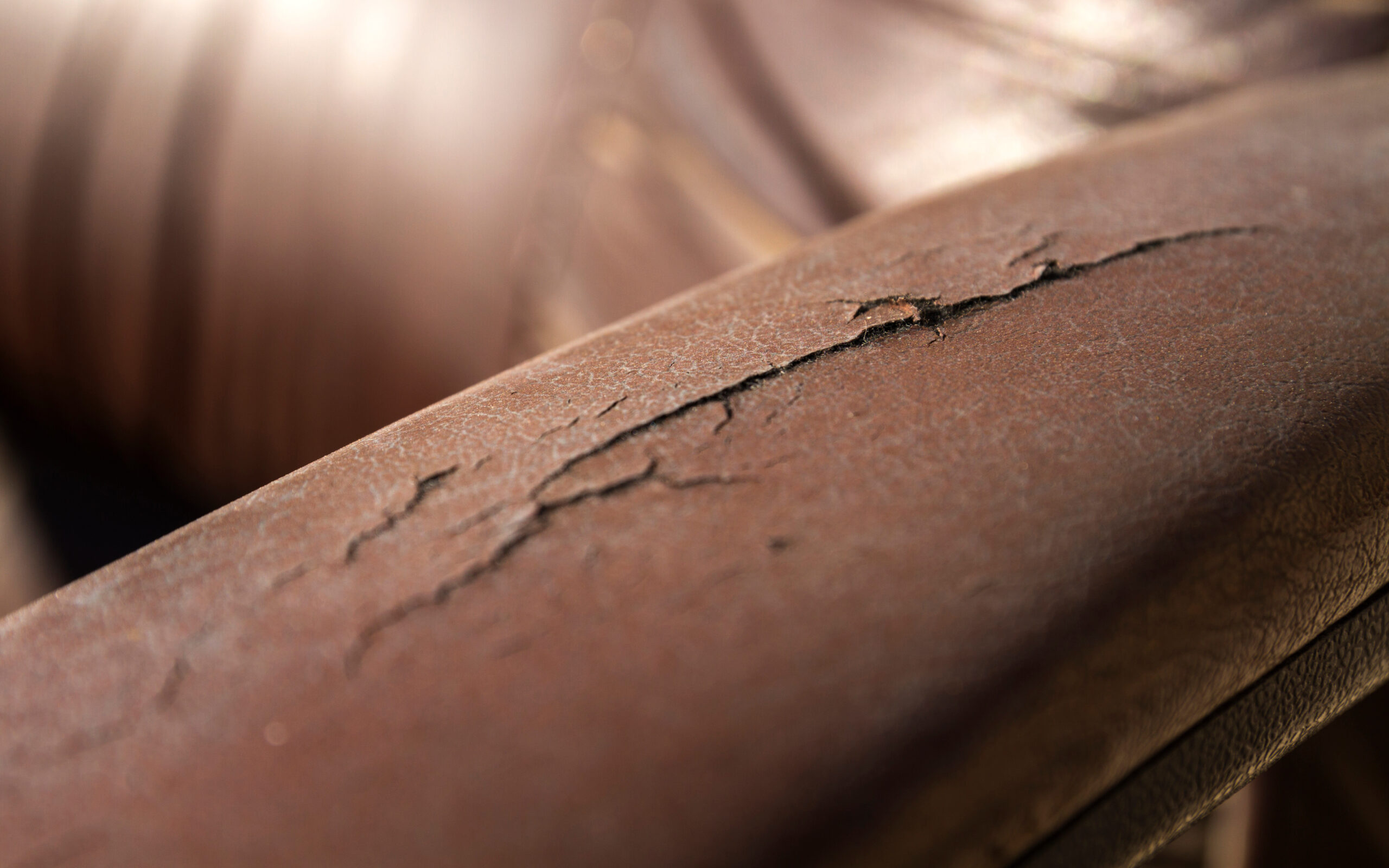Faux leather is a synthetic material made from a Polyvinyl Chloride (PVC), or Polyurethane (PU) coating. This is applied to a composite leather or fabric backing.
It is occasionally used as a substitute for real leather. But there’s a lack of information relating to its performance and sustainability.
Can Faux leather be recycled or up-cycled?
The polyurethane coating commonly used in faux leather is essentially a plastic. This is made using petrochemicals which are then applied to a polyester fabric or composite backing. Plastic and polyester aren’t biodegradable so are likely to be sent to landfill at the end of their use. Both materials may never fully degrade but instead are likely to break down into micro plastics. These are themselves a pollutant.
Unlike real leather, which can be recycled and is more likely to biodegrade, Faux leather cannot be recycled because it’s constructed using multiple layers that are bonded together using chemicals and fixatives.
Is Faux leather ‘cruelty free’?
There’s often a misconception that Faux leather is more environmentally friendly than real leather as no animal hides are involved in the manufacturing process. However, it’s important to realise that some Faux leather products are not 100% vegan as many use a base of shredded leather which is then bonded together.
It’s also worth noting that while some Faux leather products do not use any animal products, the production of their synthetic materials can have a profound environmental impact due to the harsh and polluting chemicals used in the manufacturing process.
Finally, while this won’t necessarily pacify a vegan audience, real leather is a bi-product of the meat industry making a positive use of what would be thrown away and burnt or sent to landfill.
So while Faux leather may at first seem more ethical than real leather. It is not always as environmentally friendly as it seems.
How durable is it?
In every regard Faux leather is less durable than real leather. Because it is made from synthetic materials such as Polyurethane or Polyvinyl Chloride it’s not as breathable as real leather and can crack or peel over a relatively short space of time, especially if it is subjected to heat or intense wear and tear.
Due to Faux leather’s composition, it can scratch and tear more easily than real leather and has a propensity for its top layer of plastic to split and wear. Also, due to its stiff plastic coating, Faux leather doesn’t stretch like real leather and loses what little elasticity it has more quickly.
Another issue with that type of leather’s lack of breathability, is that when it’s used for upholstery, heat can be easily trapped between the body and the chair with no means of escaping (which is why you’ll feel hot after sitting in a Faux leather chair for long periods). This is one reason why Faux leather is extremely sensitive to changes in temperature and can crack and flake when exposed to direct sunlight.
The secret to the real leather’s strength and durability lies in its fibres. These are composed of long flexible and interlocking fibrils. This makes it incredibly strong and durable, with built in flexibility.
It’s estimated that for upholstery purposes, real leather will last on average 5 times longer.
So if you’re looking for a long-lasting, high-quality product and agree with the ‘buy better, buy less’ ethos. Real leather may be the better choice, even if it’s more expensive. However, if you’re looking for a cheaper, short-term solution, Faux leather may be a more economical choice.
How do I clean and care for it?
Here are 5 tips for caring for Faux leather;
- Dust and clean the surface regularly to remove dirt or grime. You can use a soft, dry cloth to dust the surface or a slightly damp cloth to wipe it down
- Avoid using harsh chemicals or abrasive cleaners as these can damage the surface. Instead, use a mild detergent
- Avoid exposing Faux leather to heat or direct sunlight, as this can cause it to fade or crack
- Avoid getting Faux leather wet as it can absorb moisture and become discoloured or weakened. If the surface does get wet, dry it off as soon as possible with a soft, dry cloth
- Avoid placing heavy objects on Faux leather. Or placing it in areas where it may be subjected to excessive wear and tear
By following these care tips, you can help your Faux leather look as good as possible. However while Faux leather has similar care needs as real leather there is a significant difference. Faux leather will not improve with age will only deteriorate over time. No matter how much care and attention you give Faux leather. It will not develop the same look as real leather which, if looked after properly, will develop a unique and distinct lustre and patina. growing more distinguished and beautiful over years of continued use.
 Our use of cookies
Our use of cookies 